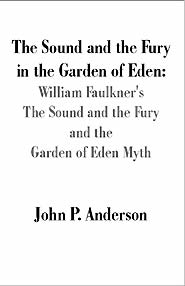
The Sound and the Fury in the Garden of Eden
William Faulkner's The Sound and the Fury and the Garden of Eden Myth
by John P. Anderson
- Number of Pages: 241
- ISBN-10: 1581126468
- ISBN-13: 9781581126464
- Publisher: Universal-Publishers
- Year: 2002
- Category: Literature & Literary Criticism, Language & Lingusitics
Synopsis
This non-academic author brings the Garden of Eden myth alive as sophisticated poetry and a polemic for women and the consciousness of freedom. The myth is explored line by line using the tools of literary analysis and modern ideas, including Freudian concepts. The analysis shows how its "J" author, thought to be a woman in the royal court of Judah around 1000 BCE, uses the techniques of sound association, puns and other sophisticated means to get her messages across. The analysis probes how after thousands of years this myth still speaks to us about the critical human experiences of sex and death and their bigger brothers freedom and limitation.Then this author shows how Faulkner used concepts from the Garden of Eden in structuring his most stunning and difficult stream of consciousness novel The Sound and the Fury. This demonstration includes a section by section and passage by passage analysis of Faulkner's materials, rearranged, marked and explicated in order to make their stunning beauty accessible to the reader.
Faulkner converts the struggle of Eve to achieve independent significance relative to a possessive God to the struggle of the Compson children to reach individuality relative to their self-indulgent parents. Sexually potent and courageous Compson daughter Caddy continues Eve's struggle for freedom, but her sterile and follower brothers fail to reach new possibilities in life. Caddy remained Faulkner's favorite character to the end of his life, and he thought her brother Jason, the representative of the Garden serpent, was the most completely evil character he ever created.
Come read the replay of the archetypal struggle for freedom in the Garden of Eden in Faulkner's mythical Yoknapatawpha County in Mississippi.



 View or Post a Review at Amazon.com
View or Post a Review at Amazon.com